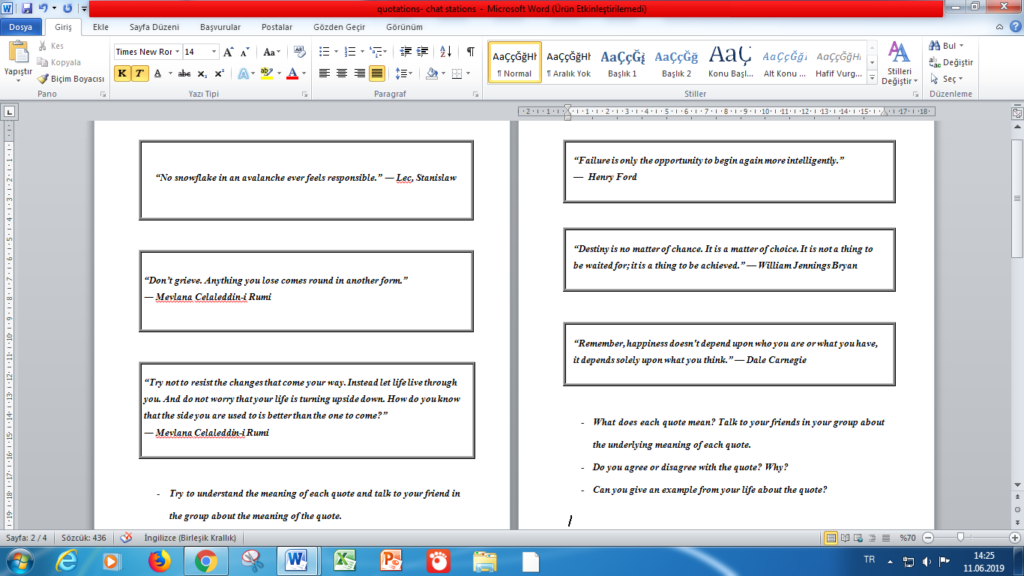Classroom Practices: Gallery Walk
It is beyond dispute that participation is an essential part of English language learning. Without engaging with the language, it is not possible to learn it. However, promoting interaction is a struggle for us as language teachers. While trying to make students interact, we have many unanswered questions, and even we often have to answer our questions on our own after minutes of silence. There were a number of reasons for that. Some learners are not enthusiastic about interaction because they become very nervous and embarrassed when they need to speak English. Also, they may be unwilling to participate in interaction because they lack self-confidence, or they may not have the language they need to interact.
Although increasing interaction is a wide topic to discuss here, one of the best things that teachers can do is varying the tasks they use in the classroom while teaching and providing variety of interaction. In addition, as an English teacher who has been teaching English for more than ten years, I can say that collaborative learning maximizes the opportunities for practice and interaction. When learners are involved in pair and group work, they interact with each other and try to reach a goal together by speaking for more of the time. Besides, they get motivated while using the language for a real reason. That’s why; I’d like to share a simple but effective collaborative strategy which aims to increase interaction in the classroom.
The strategy is called “gallery walk” (conversation stations or chat stations). Depending on the number of the students in the classroom, five or six stations are set up by hanging sheets of paper involving exercises or tasks on the walls. Students travel from station to station in groups, and they perform the task or respond to a prompt. One recorder writes the group’s responses or comments on a piece of paper. When they finish visiting the stations, students return to their seats, and a whole-class discussion starts, so all students share their thoughts and answers with each other. They discuss what they have learned, and they make final conclusions.
There may be some variations in the activity. Students can prepare posters on different topics and give other students short presentations about their posters. Listeners may ask and answer questions and interact with each other. The strategy can also be used after reading a text to discuss ideas, or themes, or it can be used as a warm-up activity before introducing a new topic to activate students’ background schema. It is also possible to use it as a pre-writing activity to generate ideas. Another variation can be using the format for students to get feedback on their work. Student products (drawings, posters etc.) can be hung on the walls. Students rotate around the classroom, talk about the projects and give feedback on them. By this way, students can improve their products before they submit them to their teachers.
I used this strategy in one of my classes for upper-intermediate level students. I divided them into small groups of six. I wrote three quotes of famous people and three discussion questions related to the quotes on four pieces of paper. I stuck them on the walls and set up four stations. Each group of students walked around the classroom and exchanged ideas about the meaning of quotes and answered the questions related to them. After they finished visiting the stations, they went back to their seats. As a whole class, we talked about the quotes and the discussion questions. After the activity, I asked my students to tell me their perceptions on the activity. They were mostly positive about it. They were happy with walking around the classroom and interacting with each other in a different way. Most importantly, the strategy dramatically increased interaction among students.

To conclude, I absolutely believe that if we want our students to interact with each other and practise what they have learnt by participation in interaction, we should find the ways to motivate them to speak and vary the activities we use in the classroom. “Chat stations” is one of the ways to engage the students and make them more willing to speak. If you are looking for a different way to motivate your students to speak, you should try it!
